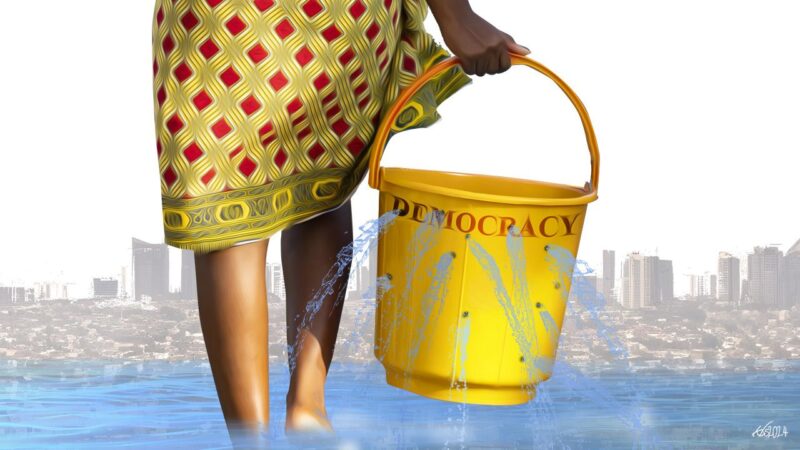On the 20th of February 2023, BBC’s ‘Africa Eye’ programme ran a harrowing exposé, chronicling the details of sexual abuse and exploitation in Unilever and James Finlay tea plantations in Kericho, Kenya. This was a severe moral jolt to many people in Kenya and abroad, living, as we do, in an era where broad claims about adherence to human rights and ‘fair trade’ principles are de rigueur amongst producers of consumer goods. However, for Kenya as a nation, the most embarrassing aspect about these revelations is that the only reason why they have been widely talked about locally relates to the fact of their currency, coupled with the fact that the companies involved are household names and the perpetrators’ names and faces were exposed for the entire world to see. If the BBC crew didn’t do this, we wouldn’t care at all because the moral fabric of our society doesn’t have the ethical space to do so.
Close observers of Kenyan social history will admit that Kenya can be considered the ‘model postcolony’ that measures success with regard to how closely individuals, institutions and the nation can adhere to norms introduced to by Victorian England. These are norms that no longer hold sway even in the UK today, outside the stunted feudal institutions of aristocracy. These antiquated norms are aggressively patriarchal and never made allowance for women’s rights. When colonialism, capitalism and racism were added into this already putrid cauldron, one of the outcomes is the extreme toxicity that exists in Kenya’s ‘plantation economy’. How can we possibly address the violation of workers’ rights in these tea estates, if we cannot even deal with the violent mass displacement of locals – some of whom are still alive – that brought these plantations into being? As a country, we generally abhor the truths. An uncomfortable truth about Kenya today is that, while we may claim that women’s rights nay, HUMAN rights, exist in our country, the toxic mix of capitalism and other western ideals that our society aspires to simply do have the moral bandwidth to deal with those issues.
It is not surprising then that the two alleged sexual predators in the tea estates, Messrs Chebochok and Yiebei, displayed a startling level of impunity. Indeed, they were both taken aback by the reluctance of the undercover reporter who exposed their abuses to comply with what they obviously felt were pretty routine (if depraved) demands in exchange for a job. To put it frankly, it would be patently dishonest for any Kenyan to claim that these sexual predators’ behaviour was out of the ordinary.
True to the Kenyan style, the outrage that followed the harrowing revelations is well-diluted with strenuous attempts to make the issue ‘go away’ in one way or another because Kenya cannot let sexual abuse allegations sully our reputation as a premier tea producer. The watering down began in the National Assembly where the case was brought before the parliamentary committee on labour, rather than justice and legal affairs. When did abuses against women move from being a crime to being a labour issue? Pray, if the abuse occurs out on the street, or in educational and religious institutions, would it be brought to the labour committee?
Our legislators fully facilitated the cover-up by allowing James Finlay’s Corporate Affairs Director, Mr Daniel Kirui, and his Human Resources Colleague, Mr Sammy Kirui, to make a waffling presentation on all their human resources issues, including drug abuse, alcoholism and financial impropriety without focusing on the abuse of these women, which made the hearing veer away from the criminal acts committed into questions about the lack of female supervisors. As a result, the miscreants are well on their way to escaping justice and despite the mutters of legal action pending against them, many of us would bet that nothing would come out of it.
It is also worth noting that neither of the women legislators from Kericho (Ms Beatrice Kemei and Ms Linet Chepkorir) where these crimes occurred felt that it merited their attention or involvement in any way. And Kenyans do not consider it callousness on their part. They are simply fitting into a state system that regards its people as chattel, not having any intrinsic value beyond what foreign interests will pay to exploit or ‘acquire’ them in some way. It is an unfortunate fact that as Kenya continues to ignore human rights violations, our women would continue to suffer even more because they bear the displaced anger of the oppressed male population in addition to the overarching exploitation.
Furthermore, the reason why the problem seems so intractable is that the oppression of women is one of the prejudices that are so deeply ingrained in Kenyan systems that we even forgot how to regard it as a problem of principle. Qualitative thinking on this issue has become anathema across our society, resulting in clumsy attempts to address it quantitatively. These include legislating on the number of women in parliament rather than creating a political level playing field where they can thrive. The private sector routinely tout the number of women on their boards rather than create genuinely women-friendly workplaces, such as providing baby crèches and adequate maternity leave. Kenya has sadly declined socially to a primitive level where we care about ‘women statistics’, not their qualities, needs, aspirations, or welfare.
Since our state regards us as commodities, Kenya routinely trades in bodies (especially female bodies) in several sectors. We routinely receive foreign tourists and dignitaries with the ‘gift’ of dancing women. Indeed, there has never been a Kenyan booth in the numerous world tourism fairs without dancing women. Put in another perspective, our governments ignore the array of wonderful biodiversity, arts, philosophy, landscapes and business opportunities Kenya has to offer, preferring to spend money to transport women to go and dance in marketplaces to attract visitors. Worst still, Kenya’s biggest exports are female domestic workers to the Middle East, where they are routinely abused and often killed without any intervention from our government. Our industrial and agricultural production sectors are littered with similar rights violations over the years, including the recent incidents in the tea estates. For instance, in 2011 and 2015, female workers in the Export Processing Zone (EPZ) in Athi River went to court to seek justice against the managers they accused of abusing and sexually harassing them in return for jobs. Kakuzi PLC, another foreign-owned agribusiness supplying the UK market was taken to court by Kenya Human Rights Commission in November 2020 for violations including beatings, blockage of public roads and rape of a 14-year-old girl by their guards. The malaise is so deep and widespread that instances can be found in virtually all companies.
The bitter truth is that today women in Kenya face an uphill battle when it comes to accessing justice, because all too often, this ends up being a battle against an avaricious, violent capitalist system, not just an individual offender. For instance, the rampant sex tourism on the Kenyan coast has been a well-known problem since the publication of a 2006 UNICEF report on the same. The silence around it to date is a clear indicator of acceptance despite regular media attention to the vice. Similar to the case of the agribusiness, EPZ, this silence is enforced by capitalism and the need for precious foreign exchange. The list is endless. In Laikipia and Samburu, there have been numerous cases of violence (sexual and otherwise) against local women by British Army trainees, without any tangible action. In March 2012, a local Nanyuki woman, Agnes Wanjiru, was killed by British Army soldiers on a night out, a crime that the perpetrator and his colleagues later bantered about on social media and confessed to back in the UK, seemingly without any fear of retribution. The consensus to belittle and cover up the crime was total, involving even the media who refer to the perpetrator as ‘soldier X’ rather than by name. The victim and her family seemingly didn’t merit such protection with references to her as a ‘sex worker’ to enhance the perception of ‘disposability’. Despite this, our authorities have always decided to renew the military training agreements time and again while justifying their decisions with capitalist considerations, such as the ‘jobs created’ by the training unit. These injustices aren’t new and have persisted for decades, judging from the number of mixed-race adults around these rural British army training areas and murder cases involving US Navy sailors in Mombasa dating back to the 1980s.
The wildlife conservation and safari tourism sector isn’t left out either from the ‘trade in women’. Many practitioners (myself included) have agitated for years, highlighting the toxic mix of racism and patriarchy, which has dominated our conservation discourse for years, and now conservation NGOs have now begun to use black women as ‘bait’ to attract newly-aware donors in Kenya and beyond, rather than change their policies. This includes the creation of “all female ranger squads”, some of whom are unarmed, while those who are wielding rudimentary or antiquated weapons are useless if the poaching is the sort of ‘war’ these same organizations say it is. None of them are trained through the state law enforcement systems. There are numerous other examples of black women being exploited to advance the most profitable agenda of the day.
Basically, Kenya is run like a plantation, and capitalists love us because they know the lives and welfare of our own will always come a distant last to their needs and wants. We have elevated window dressing to an art form, creating ‘sexual exploitation offices’ in companies, reserving seats on boards and legislatures for our preferred women, etc. but we haven’t changed in any meaningful way. Sadly, we are a long way from changing because we do not even recognize that we have a problem, since we have become so inured to our everyday violations of (the rights of) our women. We are strangely proud of the proportion of women we have in our legislatures, even though the majority of them are ‘installed’ there by our constitution rather than elected by our society. We loudly crow about their representation, yet they are routinely ejected from the house for wearing sleeveless dresses while their male counterparts can dress in traditional ‘shukas’ (togas).
We are Kenya, a proud stoic plantation with perfectly whitewashed fences, slave quarters and farmhouses. To the external gaze, it is a beautiful vista. As you were.
–
This article was first published by The Pan African Review.








